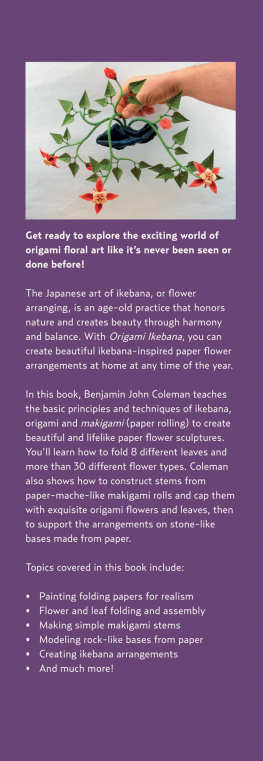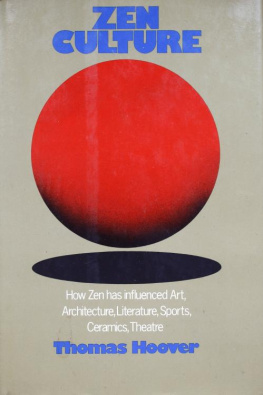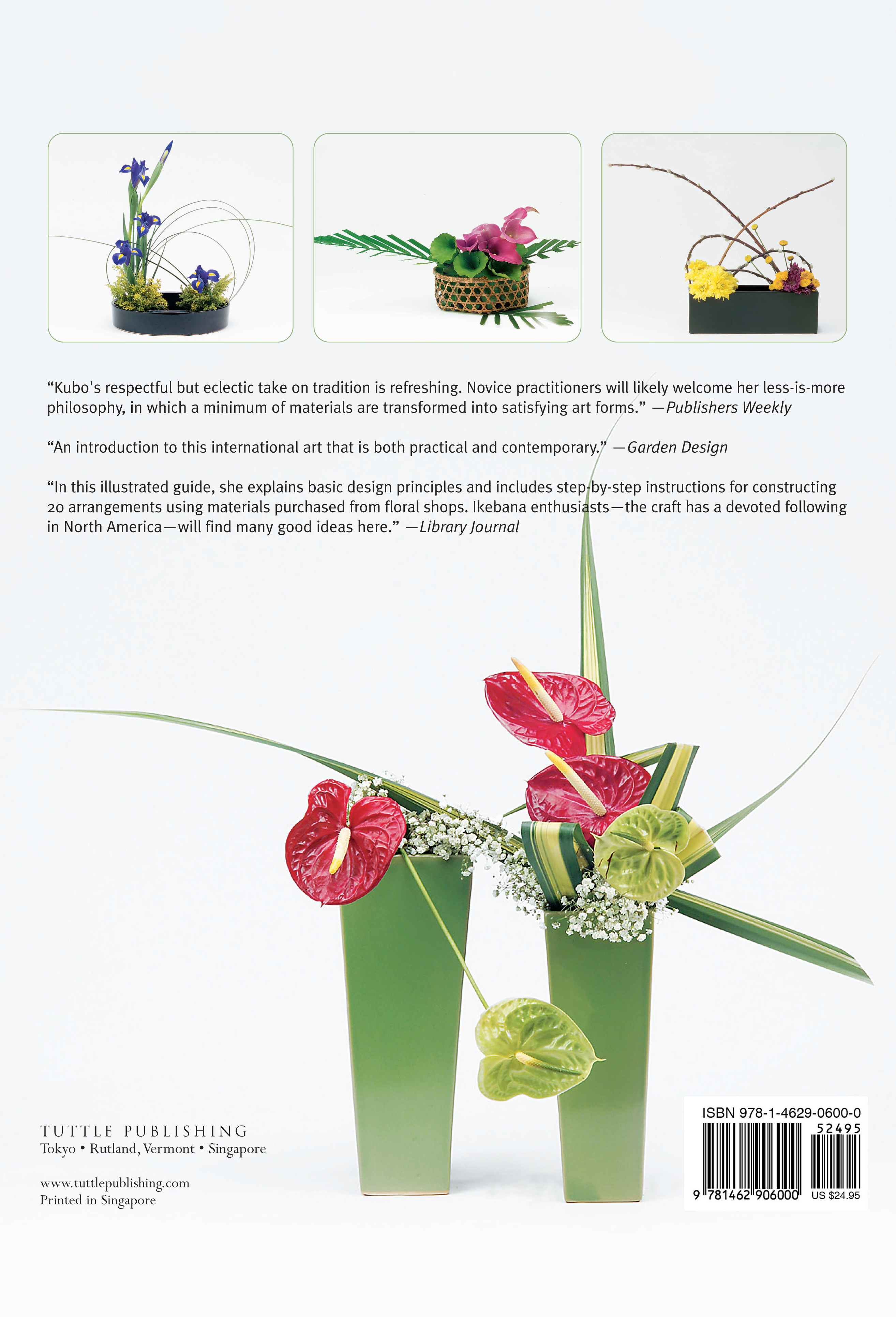Acknowledgments

First, I would like to express my appreciation to Jennifer Brown at Tuttle Publishing for giving me this special opportunity.
I would also like to extend my warmest thanks to the people who helped me complete this project, especially: photographer Erich Schrempp, of Schrempp Studio, who took the wonderful photos featured here; Anjeli Flowers, 7643 W. Belmont, Elmwood Park, IL, (708) 452-9004; and Edward Campbell, for his assistance with writing in English and revising my manuscript.
KEIKO KUBO
A project like Keiko's Ikebana requires that the composition and lighting be approached as simply and subtly as possible, allowing the arrangements to stand on the page without distraction. Light is a tool that is most powerful when it's wielded with the gentlest touch. You can't improve on a flower, but you can wrap it in light in such a way that it becomes almost luminous. That's what I set out to do in Keiko's Ikebana.
ERICH SCHREMPP
About the Author
Growing up in Japan, Keiko Kubo studied ikebana like many other Japanese women and started taking classes with her mother as a teenager. Keiko's mother, who always encouraged her art training, told Keiko that if she knew how to arrange flowers she could create her art anywhere in the world-all she would really need were a pair of scissors and her imagination.
Keiko came to the United States to pursue her studies in art after graduating from college and obtaining her teaching license for ikebana. She graduated from the School of the Art Institute of Chicago with a master of fine arts degree in Studio, majoring in sculpture, and has additionally studied Western floral art.
Keiko resides in Chicago, Illinois, where she is working toward opening her own floral design studio. If you have any questions or comments for Keiko, she may be reached at keiko@ikebanabykeiko.com.
About the Photographer
Erich Schrempp is a Chicago-based photographer specializing in illustrative images. His fine art and commissioned work can be viewed at www.schremppstudio.com.



chapter one
Ikebana Basics
P rior to starting any artistic endeavor, you must become familiar with the tools and materials essential to your work. Learning proper technique is also important because the techniques are what convert your ideas into tangible form. In this chapter, I'll discuss all the basics: from the containers, tools, materials, and techniques, to the fundamental idea behind each arrangement. Once you become familiar with the basics, you'll be much better equipped to create your own ikebana arrangements.
Containers
There are two basic types of containers ordinarily used for ikebana arrangements- the vase style (upright) for nageire and the basin style (shallow) for moribana. It's important to select the shape and color of the container carefully, since it often provides the basis for your choice of materials and will largely determine the shape of the ikebana form.
For those just starting to learn ikebana or who have not worked with flowers, I recommend beginning by obtaining one each of the following container types: a vase, a basin type, a glass type, and a basket. They all require different techniques to support the flowers inside, but you can enjoy so many different arrangements using only these few containers.
Personally, I like to use containers with a simple design that will help highlight the natural materials and that can be matched with a variety of materials. I sometimes have a hard time finding the basin-type container in the United States. So instead I will use a large, shallow bowl or a large dish as a substitute for the basin style of arrangement. I also like using glass containers, not only in the summertime, but also during other seasons. Because the glass is neutral and transparent, the design of the arrangement can extend into, and be viewed through, the container.

A variety of container styles
In order to select the right container for your arrangement, consider the following points:
The size relationship between the container and the site of display: The size of the container must correspond with the size of the display site. Too large or too tall of an arrangement for the small space can simply overwhelm the space. Too small of an arrangement in a big empty space will likewise diminish the quality of the arrangement.
The color harmony between the container, the site, and the flowers: It is generally easier if you first choose the site and a container color that matches the site, and choose the materials last, because it is often more difficult to find a proper container than it is to find materials suitable for the container and site. The choice of color is, obviously, a matter of your personal taste; however, keep in mind that the choice of color combination will fundamentally influence the overall appearance of your arrangement. For example, the use of monochromatic color (using lighter and darker colors from the same color group) creates a calm feeling. In contrast, the use of complementary colors (for example, red and green or yellow and violet) produces a much more vivid impression.
The occasion: Is the arrangement for a seasonal occasion or a special day? A basket or glass container can often be used in summertime, for instance, or a dark yellow, orange, or brown ceramic container can be well suited for the fall. Pastel colors, of course, are traditionally associated with springtime and Easter.
The surroundings: Consider nearby paintings or furniture or the wall color where your ikebana will be displayed. You want to create harmony between the container and the surrounding space. Much as you choose paintings and other decorations to match with your interior design, select a container that matches your surroundings to ensure that the ikebana blends nicely with the site.
Container Ideas
Many everyday objects can be used as alternative containers for your arrangements. If necessary, try adding a small bottle or plastic liner inside the object to prevent water from leaking.
The following arrangements are examples of how I have used alternative containers. I created these arrangements with plant materials left over from larger arrangements.

These are some of the types of items I sometimes use as a substitute for the traditional ikebana container: a teapot, some small coffee cups, a tray, and some Japanese teacups
The Green Tea Pot
I like the round shape and earth green color of this teapot. The handmade craftsmanship also gives a warm impression. Only two simple materials are used for this small arrangement: Galax leaves are rolled into a cone shape with some Craspedia placed inside. The yellow of the Craspedia creates the accent against the green pot.

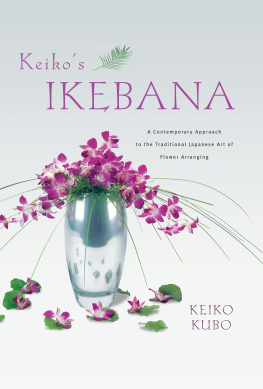
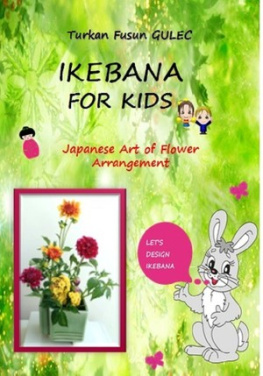
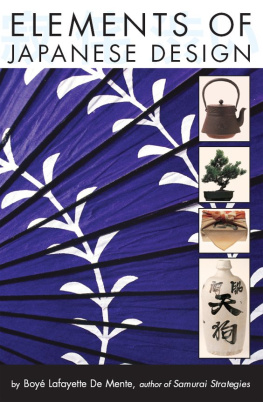
![Shinichi Nagatsuka [永塚慎] - Modern Japanese Ikebana: Elegant Flower Arrangements for Your Home](/uploads/posts/book/320284/thumbs/shinichi-nagatsuka-modern-japanese.jpg)

![Shinichi Nagatsuka [永塚慎] - Easy Ikebana: 30 Beautiful Flower Arrangements You Can Make in Three Simple Steps](/uploads/posts/book/306395/thumbs/shinichi-nagatsuka-easy-ikebana-30.jpg)


